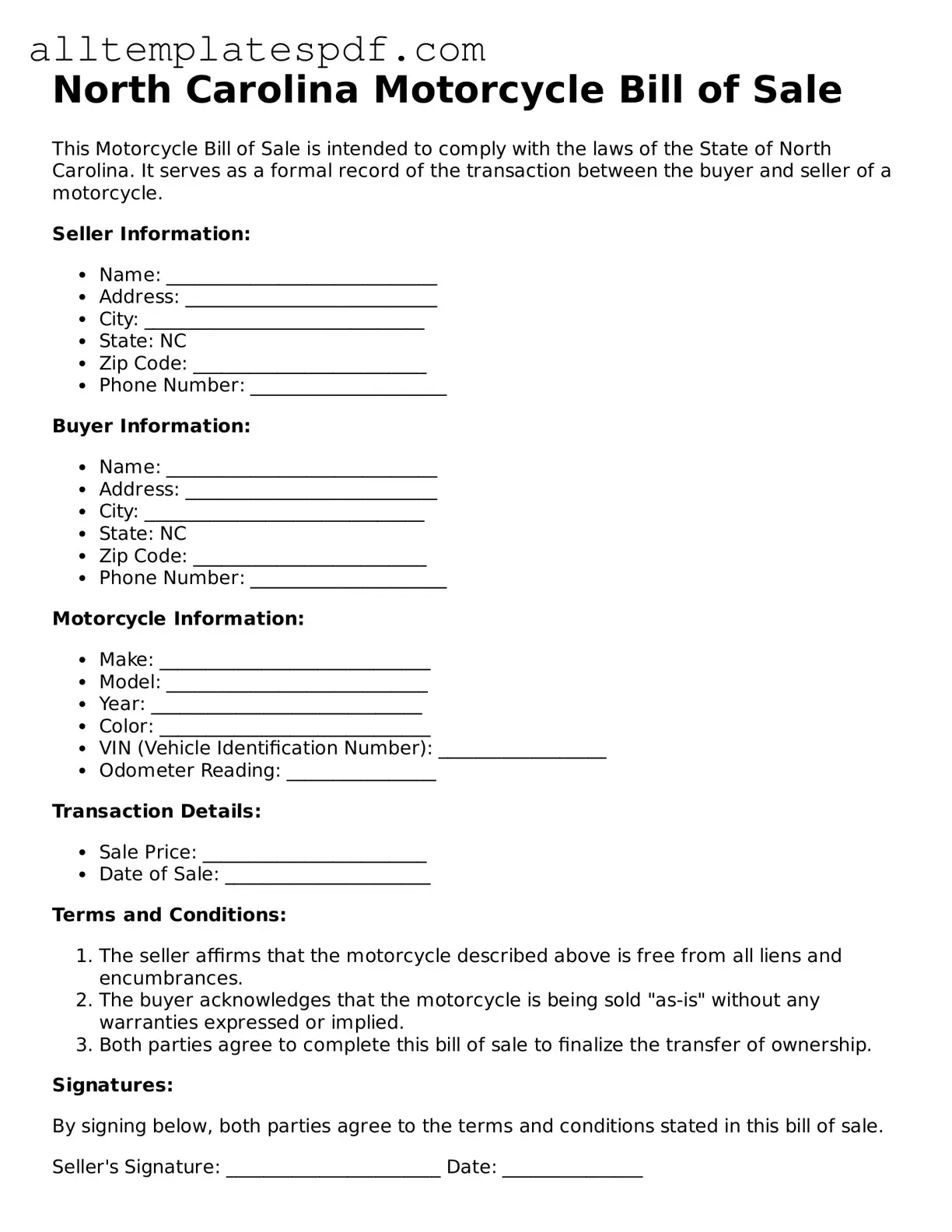Blank Motorcycle Bill of Sale Template for the State of North Carolina
The North Carolina Motorcycle Bill of Sale form is a crucial document that serves as proof of the transfer of ownership for a motorcycle. This form not only protects both the buyer and the seller but also ensures that all necessary information regarding the transaction is documented. Understanding how to properly fill out this form is essential for a smooth and legal transfer of ownership.
Ready to take the next step? Fill out the form by clicking the button below!
Open Editor
